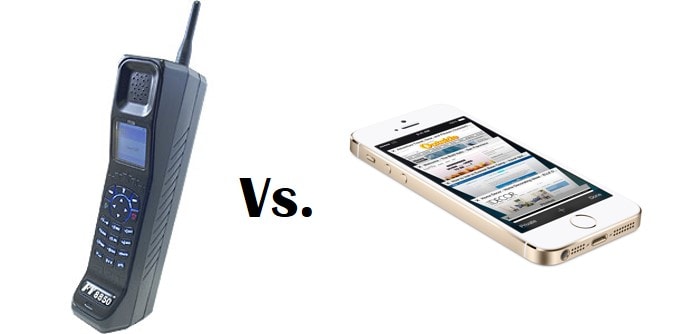The Evolution of PhoneTechnology Amazes Me: Why You Will Never See This Type of Explosion of Innovation in Medicine

There have been about 100 stories on the Google backed genetics company 23andMe this past few weeks, if you don’t believe me check out this link. I blogged about what happened with 23andMe awhile back. Basically, they were offering cheap and accurate genetic testing for informational purposes. This is the foundation of personalized medicine and is necessary to bring the medical profession into the Internet age where medicine is just information to be mined, like any number of webpages searched through Google. But just like stem cells, computer programs, and anything that might move us all out of the 1960s mass market medical infrastructure to customized medicine, the FDA stomped on 23andMe. The good news is that unlike stem cells, this action has ignited a national debate on how over-regulation kills medical innovation.
We need a certain amount of regulation in medicine. But our current regulatory structure evolved in a world where mass produced products ruled the day, so it made sense. However, it has become glacially slow and unable to deal with our increasingly customized world. If this over regulation was applied to the quick paced cell phone market in the same way its been applied to medicine, the 1980s brick phone would just be getting approval to move to the 1990s flip phone. Regrettably, the safety testing on the flip phone would take more than a decade, so blackberries will get approval by the 2020s and smart phones should be expected sometime around 2030 at the earliest. Siri? Forget about it…too risky a move and the government approval would be a nightmare as just think of what might happen if it misunderstood what you said!
The 23andMe debate is about what kind of medical future we want. Do we want a fast paced future where medical discoveries are crowd sourced using genetic information from the likes of Google, one where new therapy discovery leaves the university and becomes the purview of the common doctor or guy in the street? Think about it. When genetic data is cheap and everywhere, how hard would it be to correlate massive databases of information on which drugs or therapies work based on genetic mutations? In fact, a guy without medical knowledge who knows how to search databases for trends and patterns would be better suited than most university professors in finding the next cure for some obscure form of cancer that impacts a small group of patients with a common mutation. In this world of cheap and ever present genetic data, the power leaves the FDA/University/Pharma industrial complex. Similarly, the Internet has been upsetting traditional apple carts in publishing, retail, travel, etc… for the last 10 years. For consumers, when these markets are rearranged by cheap and easily accessed information, they are permanently changed for the better.
Regardless of the potential of ubiquitous genetic information, the public is now recognizing that a 1960s regulatory system now stands in the way of new medical discoveries. Do we really want a medical future that evolves at such a molasses pace that the brick phone is considered state of the art? Or do we want medical discoveries to happen at the pace of the Internet and the iPhone? You will decide by the message that’s delivered to the FDA. If you want to benefit from medical innovation at light speed, here’s the petition. If on the other hand, you think more like this guy from a turn of the century editorial on the “Horseless Carriage”, then don’t act:
That mad man, Henry Ford, proposes to replace the normal means of transportation with a “horseless carriage.” What few people realize is that the hazardous contraption carries up to 20 gallons of a highly explosive mixture of hexane and octane on board! Even breathing the smoke out of the engine’s smokestack will kill you. That’s a fact. Do you want something like that in your corral! This thing is dangerous, and who needs it anyway? Is there any place you cannot go on your horse?

NOTE: This blog post provides general information to help the reader better understand regenerative medicine, musculoskeletal health, and related subjects. All content provided in this blog, website, or any linked materials, including text, graphics, images, patient profiles, outcomes, and information, are not intended and should not be considered or used as a substitute for medical advice, diagnosis, or treatment. Please always consult with a professional and certified healthcare provider to discuss if a treatment is right for you.
